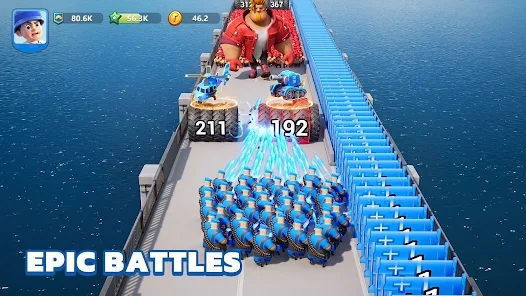Why Building Simulation Games Are Revolutionizing the Way We Create Virtual Worlds
Building simulation games are becoming a major influence in how we perceive and create virtual worlds. Unlike traditional games that offer linear stories or battles, these games focus on creativity and construction, offering players the freedom to express themselves and design their own realms. In this article, we will explore why building simulation games are revolutionizing gameplay while also hinting at the rise of properties like EA Sport FC coins. Let’s dive in!
The Rise of Simulation Games
Simulation games are more than just entertainment; they are a canvas for user creativity. From farm simulations to city builders, these games encourage players to construct, govern, and develop their world from the ground up. This hands-on approach has sparked a unique community where players share their creations, fostering a sense of collaboration and inspiration.
Understanding Building Games
At the heart of this revolution is the concept of building games. These games allow players to create worlds limited only by their imagination. They blend intricate mechanics with enjoyable gameplay routines, setting them apart from others in the industry.
- Creativity: Players design their structures, landscapes, and even ecosystems.
- Community Engagement: Sharing creations online leads to an exchange of ideas and sharpens skills.
- Endless Possibilities: Each game can lead to unique creations; there's no 'right' way to play.
The Role of EA Sports FC Coins in Gaming Ecosystems
As we explore these virtual worlds, it's interesting to note how in-game economies, such as EA Sport FC coins, fit into the broader picture. These currencies enhance gaming experiences, allowing for customization and the unlocking of additional content. Players are driven to engage more deeply in these games, enhancing their creative outlets.
| Feature | Impact on Players |
|---|---|
| Customization | Players design unique in-game assets. |
| Community Sharing | Encourages collaboration and feedback among players. |
| Engagement | Boosts time spent in the game, enhancing enjoyment. |
The Future of Virtual Worlds
As technology advances, the landscape of building simulation games will only continue to evolve. With augmented reality (AR) and virtual reality (VR) gaining ground, players may soon find themselves in entirely new dimensions of gaming. Imagine stepping into your own built world, interacting with elements you created in ways previously unimaginable. This is not just a dream; it is rapidly approaching reality.
Conclusion
Building simulation games are changing the way we create and interact within virtual worlds. They highlight the importance of creativity, community, and the potential of in-game economies. As we look forward, the integration of emerging technologies promises exciting new opportunities for builders and dreamers alike. The revolution has begun; are you ready to join?



